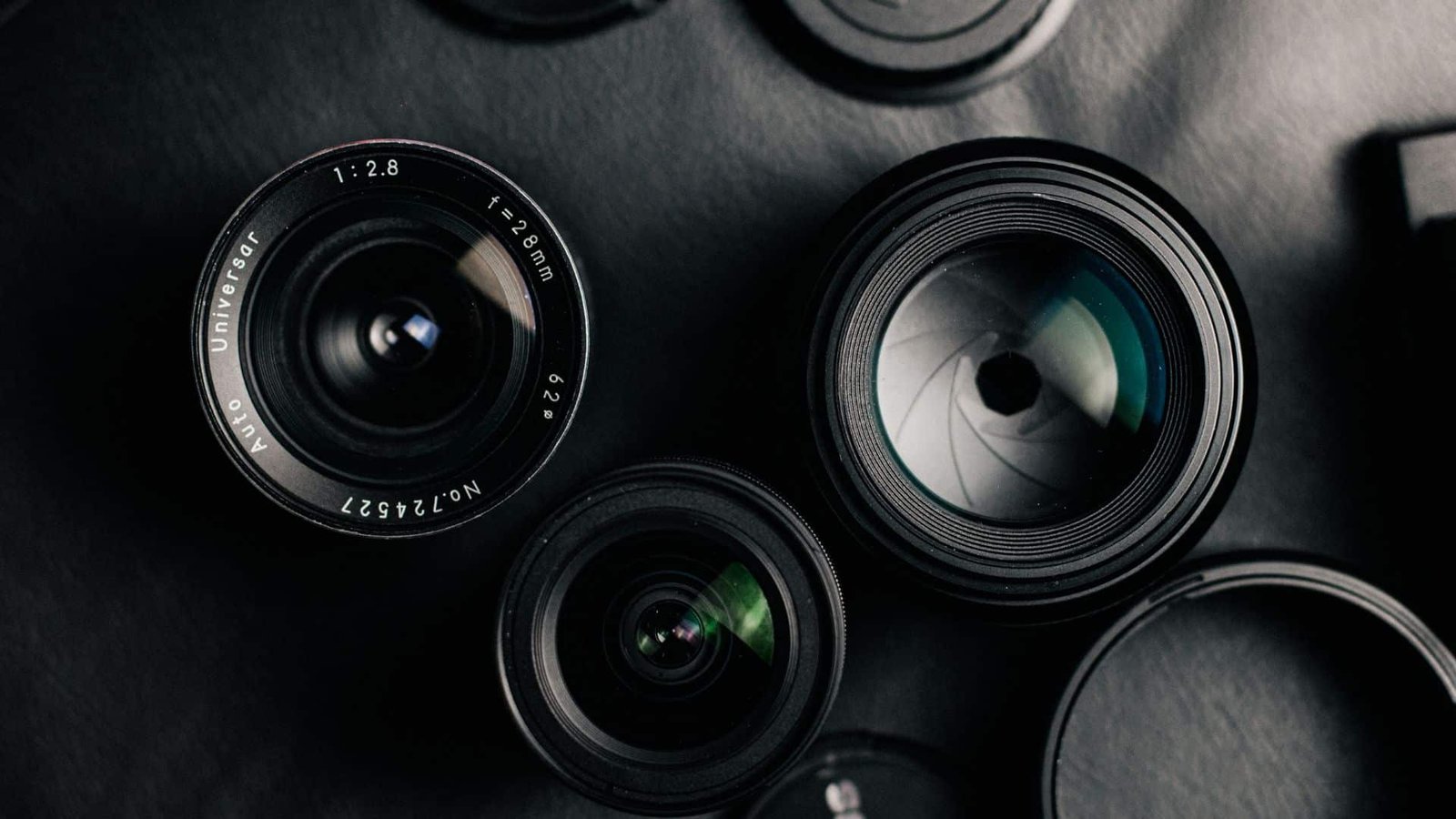Camera lenses are the heart of any photography or videography setup, capturing and directing light to create stunning images. But have you ever wondered what these intricate optical tools are made of? Camera lenses are more than just pieces of glass; they are a carefully engineered combination of materials designed to manipulate light with precision. The primary component is high-quality optical glass, but modern lenses often incorporate elements like plastics, special coatings, and even rare minerals to enhance performance. These materials work together to reduce distortions, minimize reflections, and improve clarity and color accuracy. Additionally, the lens housing, typically made of durable metals or high-grade plastics, provides protection and structural stability. Understanding what camera lenses are made of can give photographers deeper insights into how these tools function and why some lenses are more expensive than others. This post explores the materials and craftsmanship behind camera lenses in detail.
Understanding the Composition of a Camera Lens:
A camera lens consists of several key elements: the lens body, aperture, and various optical components. The primary optical components are multiple glass or plastic lens elements arranged in a specific order to control light. These elements include concave, convex, and aspherical lenses that help focus light onto the image sensor. The aperture regulates light intake and depth of field, while coatings are applied to minimize reflections and enhance clarity. The quality and precision of these elements define a lens’s performance.
1. Optical Glass: The Core of the Lens
The primary material used in camera lenses is high-quality optical glass. Unlike ordinary glass, optical glass is engineered for its ability to refract and transmit light with minimal distortion. It is carefully shaped into lens elements, which work together to bend and focus light onto the camera’s sensor or film.
Characteristics of Optical Glass:
- Clarity: It must allow light to pass through with minimal absorption or scattering.
- Uniformity: Optical glass is free from bubbles and impurities that could distort images.
- Refractive Index: This property determines how much light bends as it passes through the lens.
- Low Dispersion: To minimize chromatic aberration (color fringing), optical glass is designed to reduce the separation of light into its component colors.
Some lenses incorporate specialized optical glass, such as fluorite glass or low-dispersion glass, to further enhance image quality by reducing distortions and improving sharpness.
2. Plastic Elements: Lightweight and Affordable Alternatives
In some lenses, particularly entry-level or compact models, plastic is used instead of glass for certain elements. Modern plastics have advanced to the point where they can mimic many of the optical properties of glass while being lighter and more cost-effective.
Advantages of Plastic Elements:
- Weight Reduction: Plastic lenses make cameras and lenses easier to carry.
- Durability: Plastic is less prone to shattering compared to glass.
- Cost: Manufacturing plastic elements is more economical, making lenses more affordable.
However, plastic lenses may not match the optical precision and durability of high-quality glass lenses, which is why they are typically found in consumer-grade equipment.
3. Special Coatings: Enhancing Performance
Lens coatings play a crucial role in improving optical performance. These microscopic layers are applied to the surface of lens elements to address various issues, such as reflections, glare, and light transmission inefficiencies.
Common Types of Lens Coatings:
- Anti-Reflective Coating (AR): Reduces light reflections, minimizing glare and enhancing contrast and sharpness.
- UV Coating: Blocks ultraviolet light to reduce haze, improving image clarity, especially in outdoor photography.
- Hydrophobic Coating: Repels water and oil, making the lens surface resistant to smudges and easier to clean.
- Scratch-Resistant Coating: Protects the lens surface from minor scratches, ensuring long-lasting durability.
- Nano Coatings: Advanced coatings that minimize ghosting and flare caused by internal reflections, particularly effective in challenging lighting conditions.
- Infrared Coating: Enhances infrared light transmission, used in specialty lenses for infrared photography.
Premium lenses often feature multi-coating technology, where multiple layers of coatings are applied to maximize image quality and ensure consistent performance under challenging lighting conditions.
4. Rare Materials: Enhancing Precision
High-end lenses often include rare and exotic materials to achieve superior optical performance. For instance:
- Fluorite: A mineral used in some professional lenses to reduce chromatic aberration and enhance sharpness.
- Aspherical Elements: Made from glass or plastic, these elements have a non-spherical shape to correct distortions commonly found in wide-angle and fast-aperture lenses.
- High-Refractive Index Glass: Used to produce compact lenses without compromising image quality.
These advanced materials contribute to the exceptional performance of professional-grade lenses but also increase their cost.
5. Lens Housing: Durability and Precision
The lens housing, or barrel, is the outer structure that holds the optical elements in place. It ensures durability, precise alignment, and smooth operation of moving parts like focus and zoom rings. Lens housings are typically made from:
- Metal: Aluminum and magnesium alloys are common in high-end lenses, offering strength and durability.
- High-Grade Plastics: Found in more affordable lenses, these materials reduce weight while maintaining sufficient durability.
In weather-sealed lenses, rubber gaskets and seals are added to protect against dust, moisture, and temperature fluctuations, ensuring reliable performance in harsh conditions.
6. Aperture Mechanism: Controlling Light
The aperture mechanism in a camera lens controls the amount of light entering the camera by adjusting the size of the aperture, or opening. It consists of thin, overlapping metal blades arranged in a circular pattern, which expand or contract to change the aperture size. Measured in f-stops, a larger aperture (smaller f-stop) allows more light in, while a smaller aperture (larger f-stop) reduces light. Modern lenses use electronically controlled apertures for precision, while older lenses rely on mechanical adjustments.
7. Adhesives and Spacers: Keeping Everything Together
Within a lens, multiple elements are often glued together or spaced apart to achieve the desired optical configuration. Adhesives and spacers are essential in camera lenses, ensuring all optical elements are securely positioned and aligned. High-quality adhesives, often chosen for their thermal stability and durability, prevent lens elements from shifting due to temperature changes or physical stress. These adhesives are carefully applied to maintain precise alignment, which is crucial for optimal optical performance. Spacers, typically made of lightweight yet durable materials like metal or plastic, are placed between lens elements to maintain the correct distance. This spacing ensures proper light transmission and prevents optical aberrations. Together, adhesives and spacers contribute significantly to the lens’s structural integrity and functionality.
Conclusion
Camera lenses are marvels of engineering, crafted from a combination of high-quality optical glass, advanced plastics, special coatings, and durable housing materials. Each component is meticulously designed and assembled to ensure precise light manipulation and stunning image quality. Whether it’s the premium glass in professional lenses or the lightweight plastics in budget-friendly models, every material plays a vital role in the lens’s performance. By understanding what camera lenses are made of, photographers can better appreciate the craftsmanship behind these essential tools and make informed decisions when investing in their gear.
FAQs
a. What is the primary material used in camera lenses?
Camera lenses are primarily made of optical glass, which is specially designed for clarity and minimal distortion.
b. How do lens coatings enhance performance?
Lens coatings minimize reflections and increase contrast, optimizing light transmission, reducing flare, and contributing to sharper, vibrant images.
c. What materials are used for the lens barrel?
The lens barrel, housing glass elements, is typically made of metal or high-quality plastic, providing structural support and durability.
d. What is the role of the aperture mechanism in a lens?
The aperture mechanism, with overlapping metal blades, regulates light intake, controlling exposure and allowing for creative effects like bokeh.
e. Why are weather-sealed lenses important? Weather-sealed lenses feature seals and gaskets, protecting against dust and moisture, making them durable and suitable for challenging outdoor conditions.

